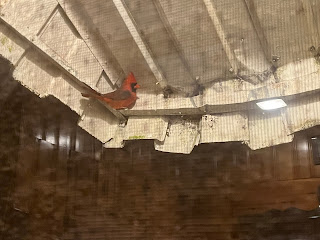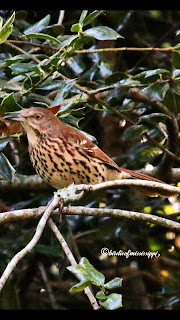CONJUNCTIVITIS IS YUCKY, CAN BE DEADLY
Since I love bird photography I belong to several FaceBook Groups that share bird photos. Depending on the group the quality of photos may vary from photos taken with a cell phone to professional quality photos taken with very expensive cameras and huge telephoto lenses.
One day a photographer shared a photo of a House Finch that was obviously very sick. The bird’s eyes were filled with gook and were very swollen. The photographer asked the group members if anyone knew what was wrong with this bird. The responses came in quickly and let the photographer know that her little bird had an eye disease called “conjunctivitis.”
According to Dr. Sidney Taylor of Coldwater Vision Center – “Conjunctivitis is an eye condition also known as “pink eye”, where the conjunctiva becomes inflamed and irritated. The condition is most often caused by cold viruses, but can also be a bacterial infection or allergies. Conjunctivitis can resolve itself, but in some cases it can progress to more serious conditions and even result in blindness if not treated.” Just like conjunctivitis in humans, “avian” conjunctivitis is very contagious and easily spread throughout the bird world.
The Birders felt sorry for the photographer because now her bird feeders were a hot spot for spreading this disease. The Group quickly advised her to remove her feeders and disinfect them with soap and bleach water. Some people recommended she keep them down for a couple weeks in order to prevent sick birds from re-contaminating them. There were also suggestions that she should capture the bird and take it to the vet to receive doses of antibiotics. But, from what I have read, it is considered best to not give “wild birds” antibiotics because a stronger virus may develop which would be worse for the birds. Conjunctivitis doesn’t usually kill, but the sickness can cause birds to die from starvation, exposure, or falling prey to predators seeking an easy meal.
“Conjunctivitis was first noticed in House Finches during the winter of 1993 in Virginia and Maryland. Until the 1940’s House Finches had only lived in western North America. But they were released into the wild in the eastern U.S. states after pet stores were stopped from the illegal sale of “Hollywood Finches,” which is what pet stores called them,” says Feederwatch.org. Conjunctivitis has now been found in the House Finch, American Goldfinch, Purple Finches, Evening Grosbeaks, and Pine Grosbeaks. Because eastern finches originated from a small group of released pet store birds, inbreeding took place and this lowered the genetic pool. The finch is now less resistant to disease and conjunctivitis has spread all over the United States and up into Canada.
The finch population has increased in the U.S. and many finches come to our yards and group closely on our feeders. Sick birds rub their infected eyes on the feeders trying to get relief from the swelling and infection. This rubbing spreads germs onto the feeder and birds that come in contact with this rubbed area then becomes infected.
Being healthy is important for bird survival and we can do our part to slow down disease transfer by taking time now before our weather turns cold to disinfect our feeders. As I “Look at the birds of the air…” Matthew 6:26, I realize even more than ever that I must do my part in preventing sickness and disease for my feathered friends and I hope that you do, too.
My photos may be viewed & “LIKED” on Facebook, Instagram and Pinterest - “Birdie of Mississippi”.
E-mail: birdieofmississippi@gmail.com - Read my Blog @ http://www.birdieofmississippi.blogspot.com



Comments
Post a Comment